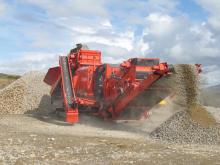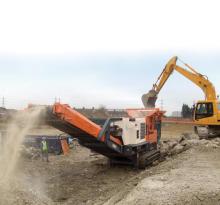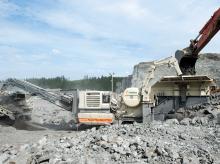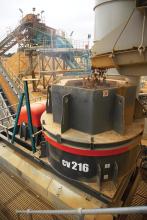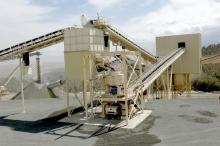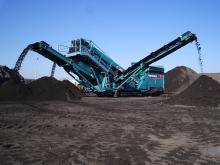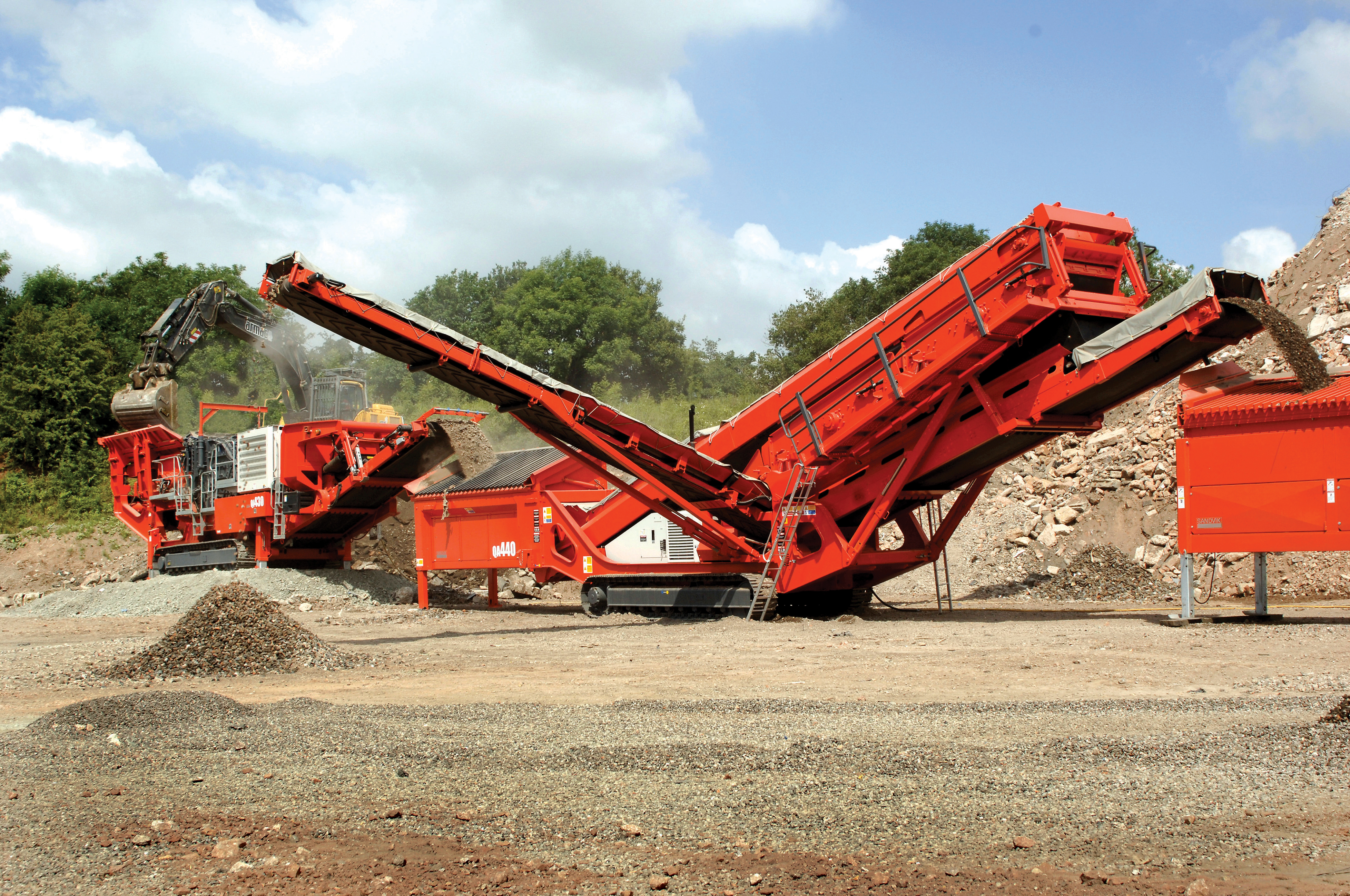
Mobile crushing and screening developing is moving from ever larger capacities to focus on higher efficiencies. Claire Symes reports
Today's largest mobile crushing and screening equipment can offer capacities to rival that of conventional static installations and has driven a step-change in quarry production. But as these larger mobile machines reach the size of being 'less mobile' development is shifting to improving efficiency of tracked and wheeled crushers and screeners.
"There has been a slight move towards smaller machines, which may be a reflection of the investment level that is available and customers making the most of the funds they do have," said
"However, once machines reach a certain size they stop being mobile in the true sense. Development now is likely to focus on improving efficiencies rather than increasing production capacities." The introduction of Stage IIIB engines for the larger crushing units in 2011 will also have a big effect. The new power units are more environmentally friendly but will impact on the cost of initial investment and running costs.
Though despite the large number of launches that were held back until the advent of the last stage of engine emissions regulations in 2005 in other equipment sectors, Nethery believes there will be a lot of new mobile crushing and screening equipment unveiled this year.
He said that Sandvik will bring its new QE440 scalping screen - previewed last year - to the market along with a new smaller impact crusher. Nethery added that he thinks the next generation of mobile crushing and screening ranges will offer better efficiencies with a focus on lower running cost and more up time.
"Recirculating conveyors are becoming standard but some customers still prefer the flexibility of having separate units," he said.
"Although the new conveyors have the potential to improve operations, some recirculating conveyors can become the limiting factor of the whole machine and that is all wrong," he said. "Some of the conveyors and bolt-on screens do not have the capacity to match the crusher, so the crusher is not used to its full potential and the crusher is where all of the cost is, so it is essential that they are carefully matched." Where Nethery believes that the pre-screens come into their own is on crawler mounted horizontal shaft impactors. "Most other types of crusher can cope with fines but this can cause early wear on impactors," he said.
Impactors are where Nethery thinks the main mobile crushing growth will come from too. "Globally there is a lot of limestone and impactors are ideal for this," he said.
"Scalping screens are also likely to be a growth area - there is a demand from demolition and recycling projects for smaller scalping screens and at the other end of the scale their popularity is also growing in quarrying and mining applications.
"Many operators are recognising that it is much more efficient to carry out some preliminary separation before primary crushing. But scalpers are also very flexible and can be quickly moved from use as a pre-screen to carrying out a three-way split after crushing. They are a very useful utility machine." According to Nethery, other developments in the next year or two are likely to offer more interlinking of controls between screens and crushers to improve the function and improve productivity. "Screening development has already gone a long way and I think there will be more focus on crushing improvements," he said.
One area that this may include is the search for alternative power supplies to reduce costs. "Electric drive adds to the initial investment costs and getting a supply could be an issue for contractors," said Nethery. "But in many emerging markets electricity is subsidised." Modular designs are going to be the key to achieving the range of power and crushing and screening options that customers are demanding, according to Nethery.

